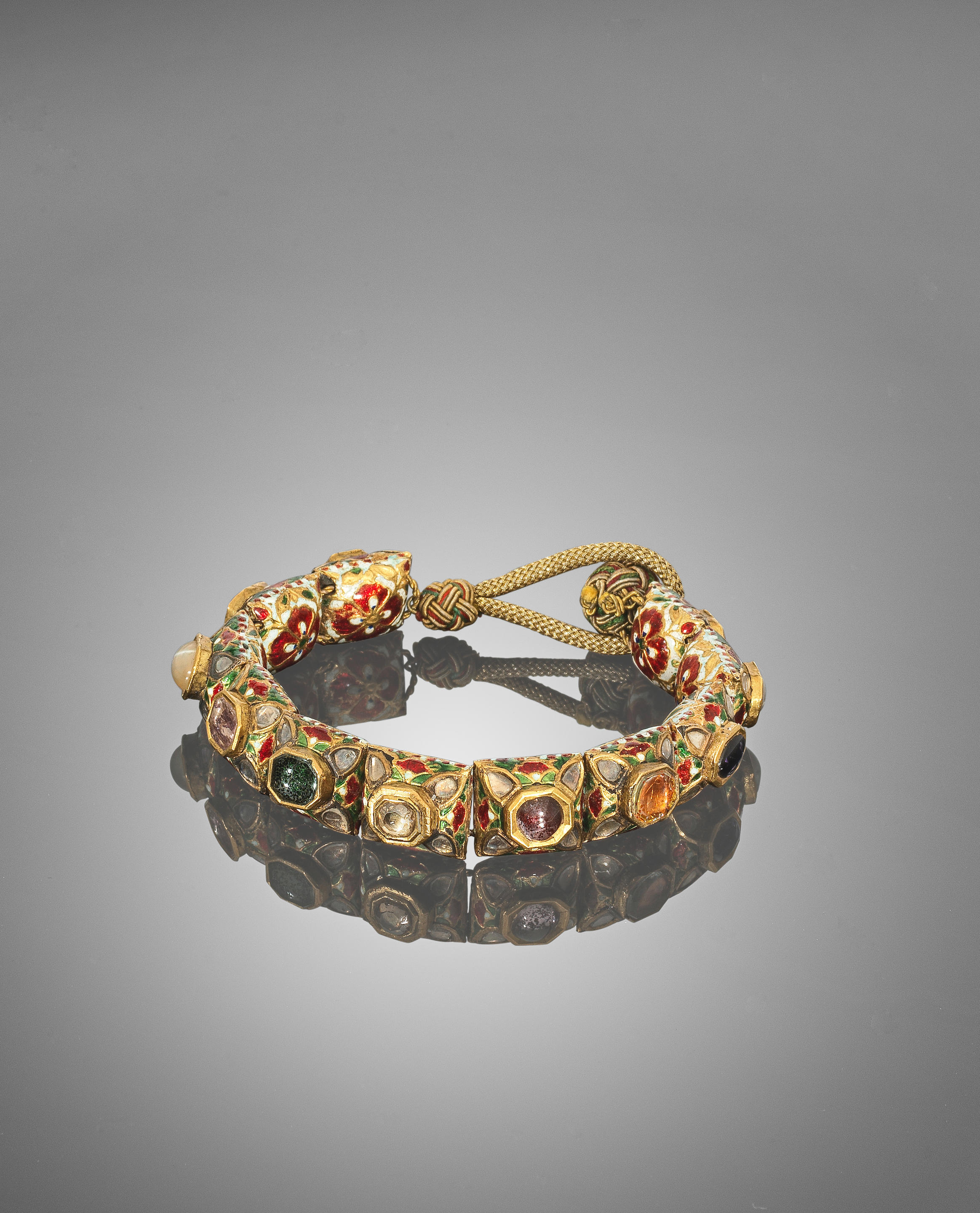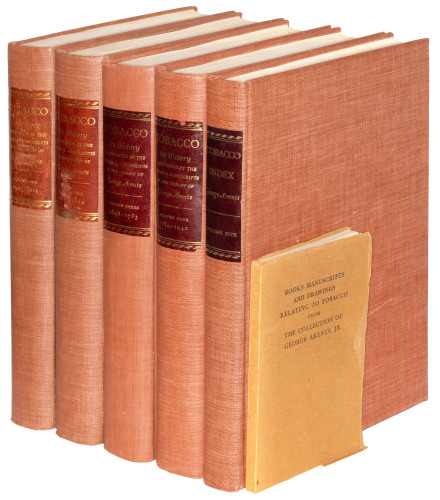From the collection of the late Barry Burnett 1935 Bugatti Type 57 Atalante Coachwork by Bugatti Registration no. DYF 4 Chassis no. 57252 *One of only three Type 57s completed with Atalante coachwork *The only known survivor *Known ownership history *Original chassis, engine, gearbox, and body, etc - all numbered and matching *Acquired by the late Barry Burnett in 2008 *Recently serviced and got running by Edwards Motorsport Fußnoten 'The car sped along at 80mph with the comfort and quietness one associates with the Type 57... We were quite willing to believe that Jean Bugatti has achieved the 435 kilometres to Paris in just under 1½ hours in the Type 57 - an average of 77mph...' - Motor Sport, May 1939. By the early 1930s Ettore Bugatti had established an unrivalled reputation for building cars with outstanding performance on road or track; the world's greatest racing drivers enjoying countless successes aboard the Molsheim factory's products and often choosing them for their everyday transport. Because of its lengthy run of success, Ettore Bugatti remained stubbornly committed to his single-cam engine, only adopting the more advanced double-overhead-camshaft method of valve actuation, after much prompting by his eldest son Jean on the Type 50 of 1930. From then on Jean Bugatti took greater responsibility for design, his first car being the exquisite Type 55 roadster, a model ranking among the finest sports cars of the 1930s. He followed that with a design of equal stature, the Type 57. A larger car than the Type 55, the Type 57 was powered by a 3.3-litre, double-overhead-camshaft straight eight of modern design housed in Bugatti's familiar Vintage-style chassis. Showing the strong influence of Jean Bugatti it at last gave the marque a civilised Grande Routière to match those of rivals Delage and Delahaye. The Type 57 attracted coachwork of the finest quality executed in a startling variety of styles but was no mere rich man's plaything, as evidenced by two outright wins at Le Mans; proof, if it were needed, that ancestral virtues had not been abandoned when creating a car fit to rank alongside Rolls-Royce or Bentley. Its success is revealed by the production figures: some 670-or-so examples of all Type 57 models were produced between 1934 and 1940, and the post-war Type 101 was based on its chassis. However, although many Type 57s were fitted with bespoke bodies, the most popular coachwork was built to Jean Bugatti's designs by the marque's preferred carrossier, Gangloff of Colmar, just a few miles from the Bugatti works at Molsheim. Factory offerings on the Type 57 chassis included the Galibier four-door saloon, Stelvio cabriolet, four-seater Ventoux coupé, and two-seater Atalante faux cabriolet (coupé). In Greek mythology, the athletic huntress Atalanta would only marry a man that could out-run her; it is thus a most appropriate appellation for this fast, exotic and very stylish Bugatti. The Type 57 in all its forms attracted discerning owners who were only satisfied with the best, among them speed king Sir Malcolm Campbell. Himself the owner of a Type 57, he wrote: 'If I was asked to give my opinion as to the best all-round super-sports car which is available on the market today, I should, without any hesitation whatever, say it was the 3.3 Bugatti... it cannot fail to attract the connoisseur or those who know how to handle the thoroughbred. It is a car in a class by itself.' This fine Bugatti Type 57 – number '57252' – started life as one of 10 'Grand Raid' two-seater sports roadster chassis but actually left the factory as one of three completed with Atalante coachwork. As we have seen, the Type 57 had been intended as a Grande Routière rather than an out-and-out sports car. However, during the autumn of 1934 Bugatti began exploring the possibility of a building a Type 57 two-seater roadster, and on 15th September 1934 a design (number '1067') for such a model was produced. By the time the car was presented at the Par
From the collection of the late Barry Burnett 1935 Bugatti Type 57 Atalante Coachwork by Bugatti Registration no. DYF 4 Chassis no. 57252 *One of only three Type 57s completed with Atalante coachwork *The only known survivor *Known ownership history *Original chassis, engine, gearbox, and body, etc - all numbered and matching *Acquired by the late Barry Burnett in 2008 *Recently serviced and got running by Edwards Motorsport Fußnoten 'The car sped along at 80mph with the comfort and quietness one associates with the Type 57... We were quite willing to believe that Jean Bugatti has achieved the 435 kilometres to Paris in just under 1½ hours in the Type 57 - an average of 77mph...' - Motor Sport, May 1939. By the early 1930s Ettore Bugatti had established an unrivalled reputation for building cars with outstanding performance on road or track; the world's greatest racing drivers enjoying countless successes aboard the Molsheim factory's products and often choosing them for their everyday transport. Because of its lengthy run of success, Ettore Bugatti remained stubbornly committed to his single-cam engine, only adopting the more advanced double-overhead-camshaft method of valve actuation, after much prompting by his eldest son Jean on the Type 50 of 1930. From then on Jean Bugatti took greater responsibility for design, his first car being the exquisite Type 55 roadster, a model ranking among the finest sports cars of the 1930s. He followed that with a design of equal stature, the Type 57. A larger car than the Type 55, the Type 57 was powered by a 3.3-litre, double-overhead-camshaft straight eight of modern design housed in Bugatti's familiar Vintage-style chassis. Showing the strong influence of Jean Bugatti it at last gave the marque a civilised Grande Routière to match those of rivals Delage and Delahaye. The Type 57 attracted coachwork of the finest quality executed in a startling variety of styles but was no mere rich man's plaything, as evidenced by two outright wins at Le Mans; proof, if it were needed, that ancestral virtues had not been abandoned when creating a car fit to rank alongside Rolls-Royce or Bentley. Its success is revealed by the production figures: some 670-or-so examples of all Type 57 models were produced between 1934 and 1940, and the post-war Type 101 was based on its chassis. However, although many Type 57s were fitted with bespoke bodies, the most popular coachwork was built to Jean Bugatti's designs by the marque's preferred carrossier, Gangloff of Colmar, just a few miles from the Bugatti works at Molsheim. Factory offerings on the Type 57 chassis included the Galibier four-door saloon, Stelvio cabriolet, four-seater Ventoux coupé, and two-seater Atalante faux cabriolet (coupé). In Greek mythology, the athletic huntress Atalanta would only marry a man that could out-run her; it is thus a most appropriate appellation for this fast, exotic and very stylish Bugatti. The Type 57 in all its forms attracted discerning owners who were only satisfied with the best, among them speed king Sir Malcolm Campbell. Himself the owner of a Type 57, he wrote: 'If I was asked to give my opinion as to the best all-round super-sports car which is available on the market today, I should, without any hesitation whatever, say it was the 3.3 Bugatti... it cannot fail to attract the connoisseur or those who know how to handle the thoroughbred. It is a car in a class by itself.' This fine Bugatti Type 57 – number '57252' – started life as one of 10 'Grand Raid' two-seater sports roadster chassis but actually left the factory as one of three completed with Atalante coachwork. As we have seen, the Type 57 had been intended as a Grande Routière rather than an out-and-out sports car. However, during the autumn of 1934 Bugatti began exploring the possibility of a building a Type 57 two-seater roadster, and on 15th September 1934 a design (number '1067') for such a model was produced. By the time the car was presented at the Par















Testen Sie LotSearch und seine Premium-Features 7 Tage - ohne Kosten!
Lassen Sie sich automatisch über neue Objekte in kommenden Auktionen benachrichtigen.
Suchauftrag anlegen